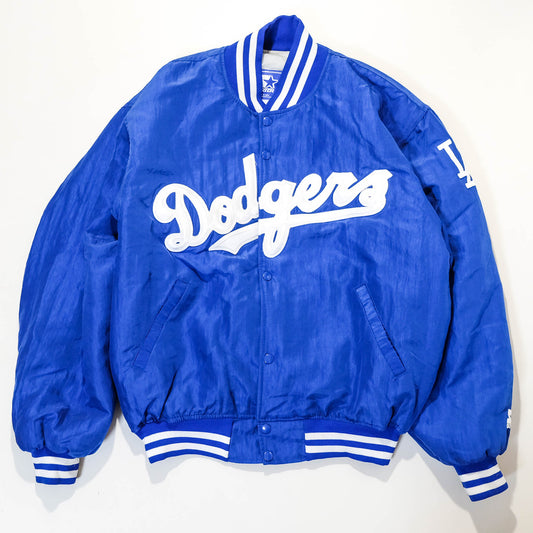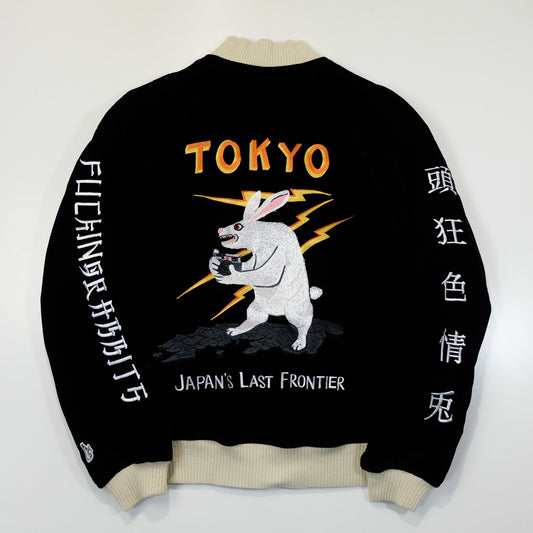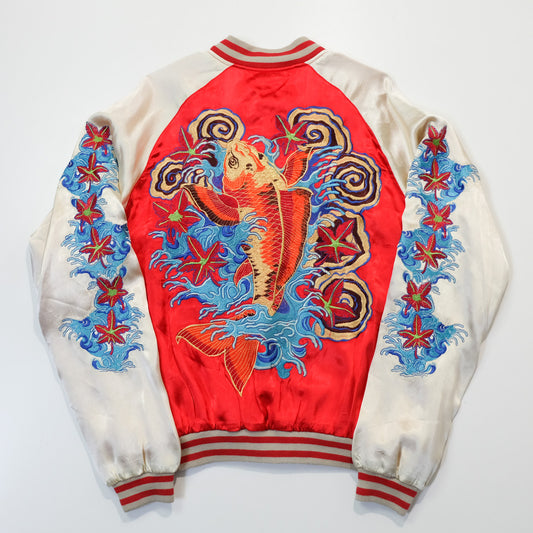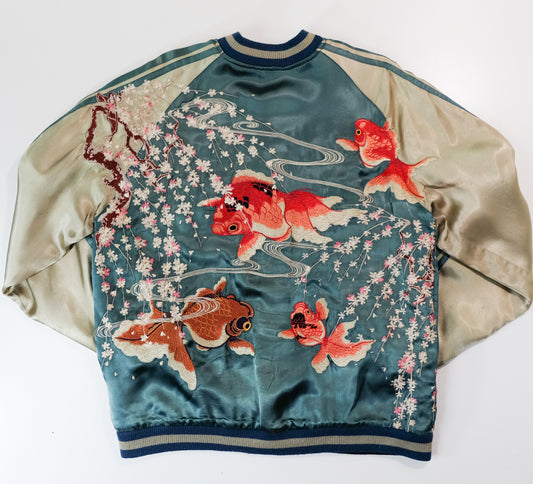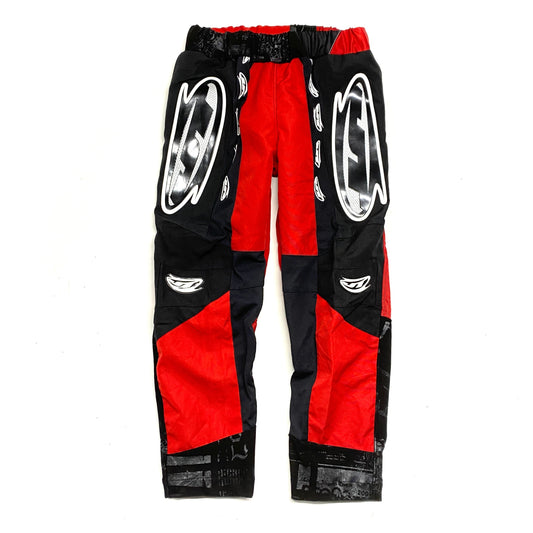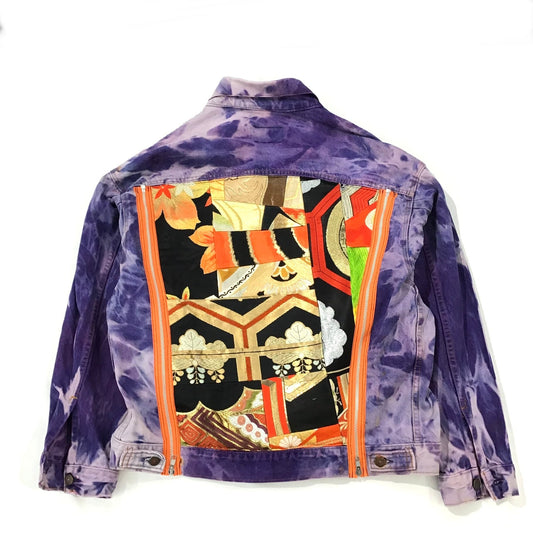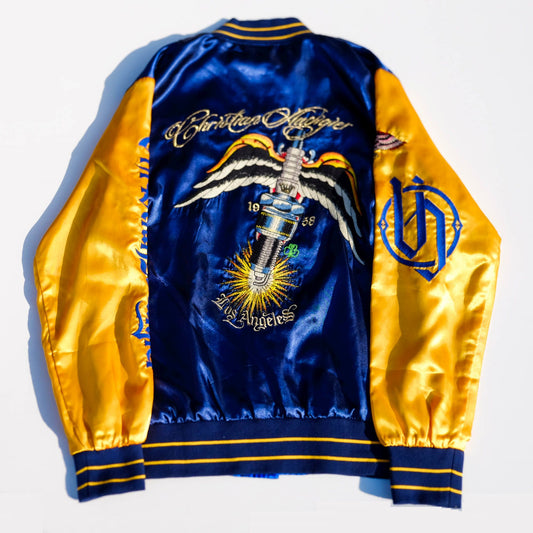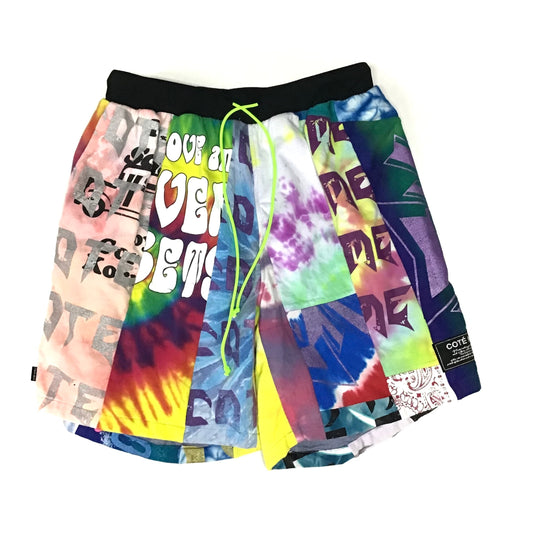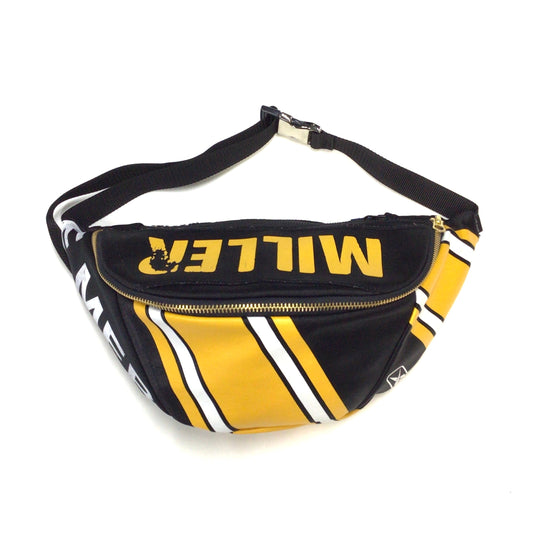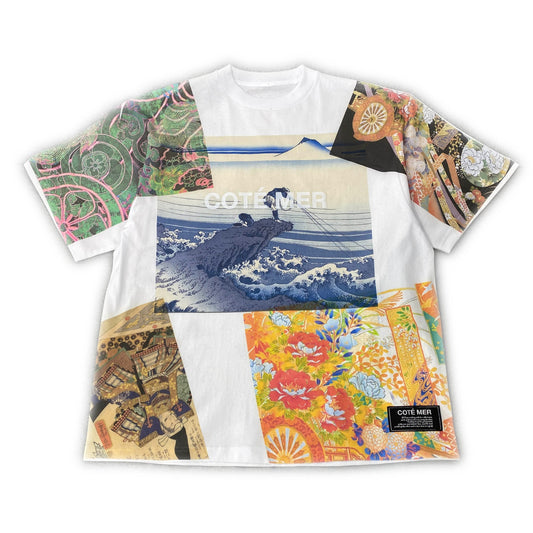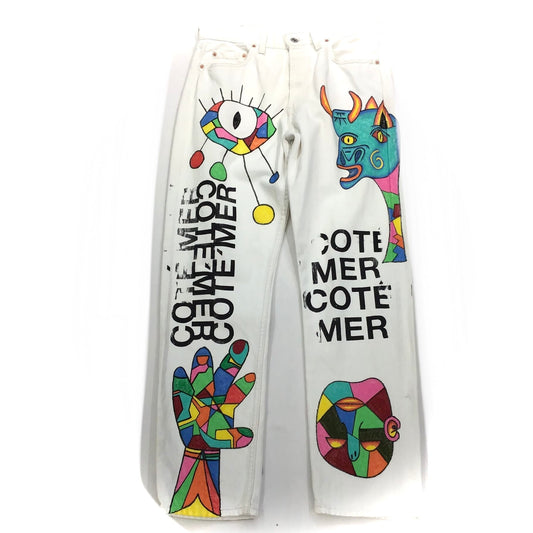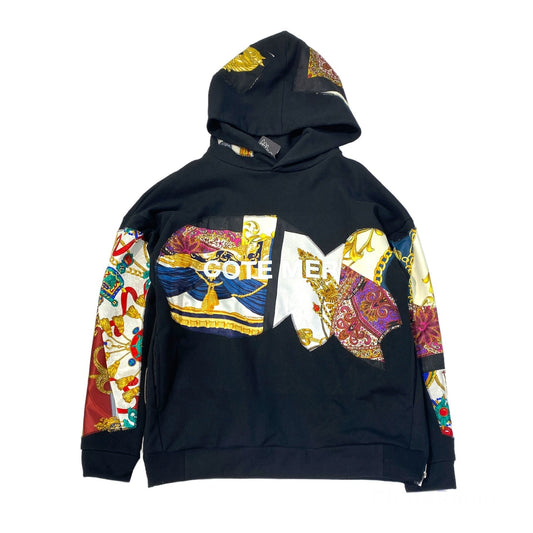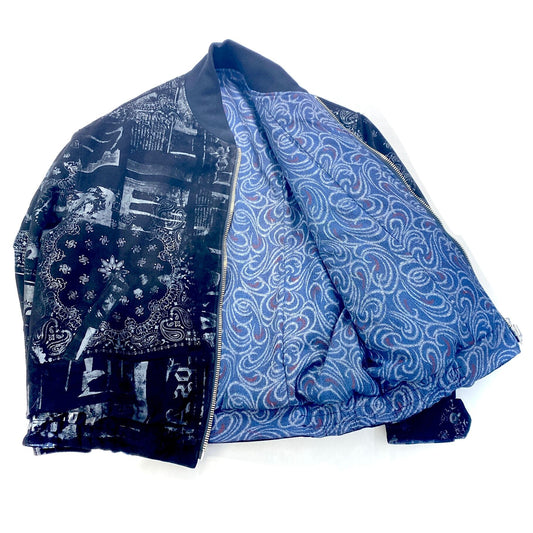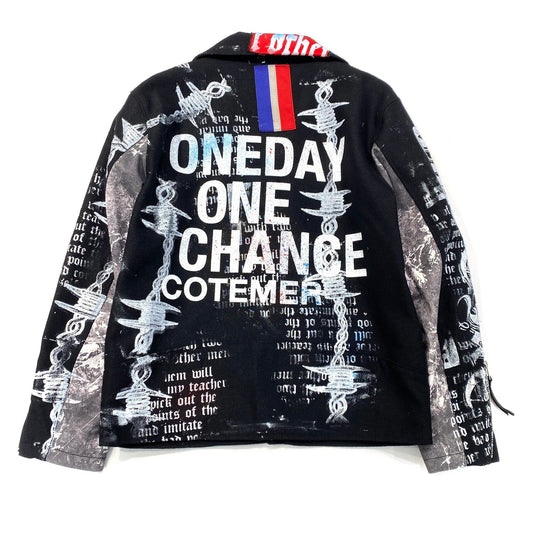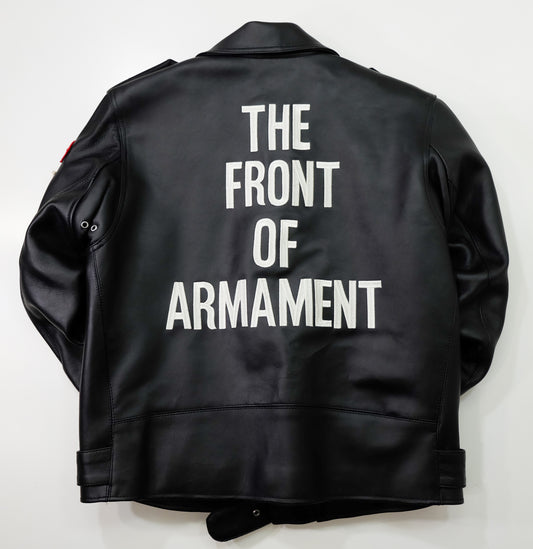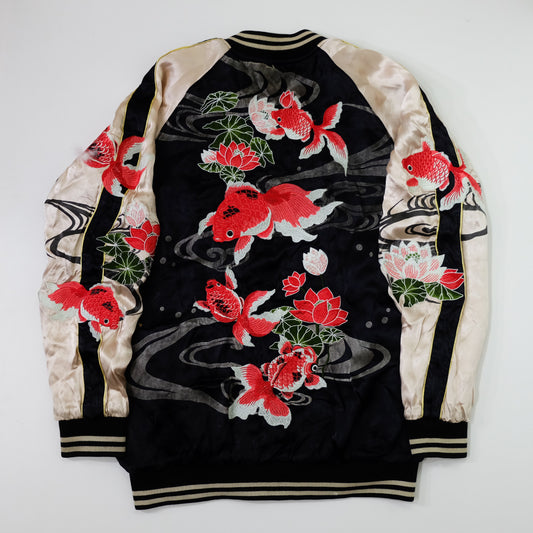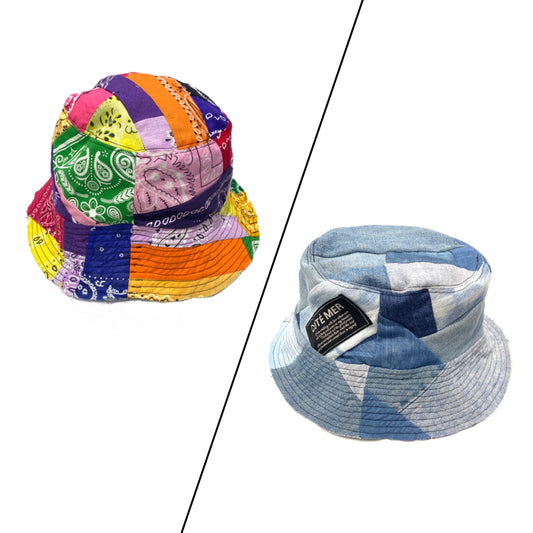-
Starter Major League LA DODGERS Baseball Team Blue Japanese Player NOMO 16 Embroidered Embroidery Reversible Varsity MA-1 Bomber Jacket ( Size : L )
Regular price $400.00 USDRegular priceUnit price per -
Badass Vanquish FR2 Velvet Japanese Japan TOKYO Fucking Rabbits "I Just Wanna Fxxk You" Usagi Tattoo Art Design Embroidered Embroidery Reversible Sukajan Souvenir Sukajum Skajum Tattoo Art Design Yokosuka Jumper Biker MA-1 Bomber Jacket ( Size : L )
Regular price $540.00 USDRegular priceUnit price per -
Badass TEDMAN Clothing EFU Shokai Pop Yellow Japanese Japan Oiran Geisha Kimono Ukiyoe Oiran Tattoo Art Design Embroidered Embroidery Reversible Sukajan Souvenir Sukajum Skajum Tattoo Art Design Yokosuka Jumper Biker MA-1 Bomber Jacket ( Size : 40 / M )
Regular price $620.00 USDRegular priceUnit price per$680.00 USDSale price $620.00 USDSale -
Onigashima Orange Pop Color Japanese Japan Rising Koi Carp Fish Hokusai Wave Classic Tattoo Art Design Embroidered Embroidery Reversible Sukajan Souvenir Sukajum Skajum Tattoo Art Design Yokosuka Jumper Bomber Jacket ( Size : M )
Regular price $430.00 USDRegular priceUnit price per$550.00 USDSale price $430.00 USDSale -
Classic Japanese Japan Okinawa Island Map Blue Yellow Tiger Dragon Tattoo Art Design Embroidered Embroidery Reversible Sukajan Souvenir Sukajum Skajum Tattoo Art Design Yokosuka Jumper Bomber Jacket ( Size : M - L )
Regular price $465.00 USDRegular priceUnit price per -
Cute Chic Japanese Japan Kingyo Gold Fish Sakura Cherry Blossoms Flowers Tattoo Art Design Embroidered Embroidery Reversible Sukajan Souvenir Sukajum Skajum Tattoo Art Design Yokosuka Jumper Bomber Jacket ( Size : L )
Regular price $520.00 USDRegular priceUnit price per$675.00 USDSale price $520.00 USDSale -
Bespoke Custom Wagara Hypebeast Japanese Vintage Handmade One and Only One Cote Mer Upscale Upcycle Sustainable Street Fashion Embroidered Embroidery Kimono Obi Boro Remake Souvenir Sukajan Bomber Riders Blousson Jacket ( Size : XL )
Regular price $4,950.00 USDRegular priceUnit price per -
Red Bespoke Hypebeast Japanese Vintage Handmade Custom One and Only One Cote Mer Upcycle Sustainable Street Fashion Sports Jersey Motorcycle Biker Rider Pants Bottoms ( Size : XL )
Regular price $1,280.00 USDRegular priceUnit price per -
Indigo Blue Wagara Remake Bespoke Japanese Japan Vintage Levi's Handmade Custom One and Only One Cote Mer Upcycle Sustainable Street Fashion Embroidered Embroidery Kimono Obi Boro Patchwork x Bleached Denim Jacket ( Size : L - XL )
Regular price $1,480.00 USDRegular priceUnit price per -
Christian Audigier Japanese Japan Yakuza Yanki Badass Gangster Gangsta Skeleton Skull Tattoo Art Design Street Fashion Embroidered Embroidery Reversible Velvet Sukajan Souvenir Sukajum Skajum Yokosuka Jumper Bomber Jacket ( Size : 14 : XL )
Regular price $1,200.00 USDRegular priceUnit price per -
Remake Baggy Hiphop Loose Psychedelic Colorful Bespoke Hypebeast Japanese Vintage Wagara Graphics Style Handmade Custom One and Only One Cote Mer Upcycle Sustainable Street Fashion Bleached Tie Dye Half Pants Shorts Bottoms ( Size : L )
Regular price $410.00 USDRegular priceUnit price per -
NFL Football Jersey "MILLER" Amekaji Japanese Vintage Handmade Custom One and Only One Cote Mer Upcycle Sustainable Upscale Street Fashion Embroidered Remake Deconstructed Shirts Waist Bag
Regular price $295.00 USDRegular priceUnit price per -
Bespoke Hypebeast Japanese Vintage Wagara Ukiyoe Samurai Kabuki Geisha Sharaku Hokusai Wave Style Handmade Graphic Custom COTE MER Upcycle Sustainable Street Fashion Kimono Obi Boro Design Remake Tops Print T Tee Shirt ( Size : L )
Regular price $354.55 USDRegular priceUnit price per -
Bespoke Hypebeast Japanese Vintage Handmade Custom One and Only One Cote Mer Modern Art Paint Pants Jeans Bottoms ( Size : L - XL )
Regular price $875.00 USDRegular priceUnit price per -
Bespoke Hypebeast Japanese Vintage Handmade Custom One and Only One Cote Mer Upcycle Sustainable Street Fashion Bandana Scarf Boro Patchwork Style Remake Hoodie Parka Jacket ( Size : L )
Regular price $1,290.00 USDRegular priceUnit price per -
Bespoke Hypebeast Japanese Remake Vintage Handmade Custom One and Only One Cote Mer Upcycle Sustainable Street Fashion Remake Paint Bandana Style Paint Graffiti Kimono Bomber Jacket ( Size : M )
Regular price $1,920.00 USDRegular priceUnit price per -
ONE OK ROCK Band "One Day One Chance" Bespoke Hypebeast Japanese Remake Vintage Handmade Custom One and Only One Cote Mer Wagara Upcycle Sustainable Street Fashion Remake Paint Graffiti Wool x Leather Riders Blouson Jacket ( Size : L )
Regular price $2,450.00 USDRegular priceUnit price per -
CROWS X WORST ZERO Japanese Japan Yakuza Yanki Badass Gangster Gangsta Street Fashion Biker RIders Leather Jacket ( Size : L )
Regular price $1,200.00 USDRegular priceUnit price per -
MIYABI MUSUBI Cute Chic Sexy Japanese Japan Kingyo Gold Fish Dragon Nihonga Ukiyoe Art Dragon Embroidered Embroidery Street Fashion Reversible Velvet Sukajan Souvenir Sukajum Skajum Yokosuka Jumper Bomber Jacket ( Size : L )
Regular price $835.00 USDRegular priceUnit price per -
Amekaji Japanese Vintage Handmade Custom One and Only One Cote Mer Upcycle Sustainable Upscale Street Fashion Bucket Paisley Collage Reversible Hat
Regular price $265.00 USDRegular priceUnit price per
